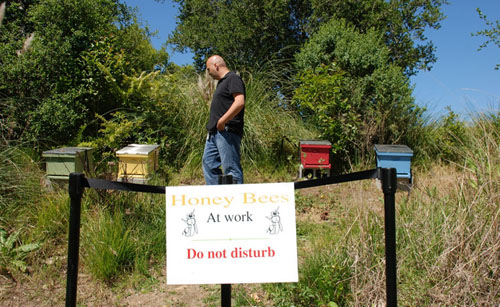First, dogs were allowed in the offices. Next, goats were brought in to cut the grass. Now, bees have also made their way onto Google’s property, with four new hives arranged at a safe distance to raise awareness about Colony Collapse Disorder (and supply employees with honey and wax).
With regards to the most serious reason for this move, Marc Rasic, Google’s executive chef, explained on the Official Google Blog that CCD is "a phenomenon in which worker bees abandon the hive for reasons that aren’t fully understood. . . . This has grave implications for us all as bees are responsible for pollinating approximately 70 percent of the fruit and vegetables we eat. The loss of bees has serious consequences for plants, wildlife and human survival. (You can read more here.)"
As for the more whimsical aspects of the development, Rasic wrote, "The four hives – collectively known as the Hiveplex, of course – are each painted in one of Google’s colors. . . . Many Googlers have signed up to contribute to beekeeping and honey extraction efforts, and, come the harvest in the fall, we’ll round the season off with a series of cooking classes and candle-making sessions for all those who have signed up to help."

This may not be the last non-Googlers hear about the bees, either, since Rasic (non-jokingly) indicated that Google might create a Buzz account for them.
Anyone care to guess what’s coming next? A real-life petting zoo doesn’t seem far off.




 WebProNews is an iEntry Publication
WebProNews is an iEntry Publication